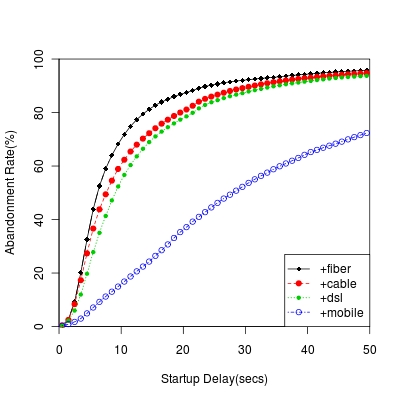|
TCP Reset Attack
A TCP reset attack, also known as a forged TCP reset or spoofed TCP reset, is a way to terminate a TCP connection by sending a forged TCP reset packet. This tampering technique can be used by a firewall or abused by a malicious attacker to interrupt Internet connections. As of 2025, the The Great Firewall of China, Iranian Internet censors, and Indonesian TKPPSE Firewall system are known to use TCP reset attacks to interfere with and block connections as a major method to carry out Internet censorship. Background The Internet is a system for individual computers to exchange electronic messages, or packets of data. This system includes hardware to carry the messages (such as copper and fiber optics cables) and a formalized system for formatting the messages, called "protocols". The basic protocol used on the Internet is the Internet Protocol (IP), which is usually coupled with additional protocols such as TCP (Transmission Control Protocol) or UDP (User Datagram Protocol). TC ... [...More Info...] [...Related Items...] OR: [Wikipedia] [Google] [Baidu] |
TCP Connection
The Transmission Control Protocol (TCP) is one of the main protocols of the Internet protocol suite. It originated in the initial network implementation in which it complemented the Internet Protocol (IP). Therefore, the entire suite is commonly referred to as TCP/IP. TCP provides reliable, ordered, and error-checked delivery of a stream of octets (bytes) between applications running on hosts communicating via an IP network. Major internet applications such as the World Wide Web, email, remote administration, and file transfer rely on TCP, which is part of the transport layer of the TCP/IP suite. Transport Layer Security, SSL/TLS often runs on top of TCP. TCP is Connection-oriented communication, connection-oriented, meaning that sender and receiver firstly need to establish a connection based on agreed parameters; they do this through three-way Handshake (computing), handshake procedure. The server must be listening (passive open) for connection requests from clients before a ... [...More Info...] [...Related Items...] OR: [Wikipedia] [Google] [Baidu] |
Network Neutrality
Net neutrality, sometimes referred to as network neutrality, is the principle that Internet service providers (ISPs) must treat all Internet communications equally, offering users and online content providers consistent transfer rates regardless of content, website, platform, application, type of equipment, source address, destination address, or method of communication (i.e., without price discrimination). Net neutrality was advocated for in the 1990s by the presidential administration of Bill Clinton in the United States. Clinton signed of the Telecommunications Act of 1996, an amendment to the Communications Act of 1934. In 2025, an American court ruled that Internet companies should not be regulated like utilities, which weakened net neutrality regulation and put the decision in the hands of the United States Congress and state legislatures. Supporters of net neutrality argue that it prevents ISPs from filtering Internet content without a court order, fosters freedom o ... [...More Info...] [...Related Items...] OR: [Wikipedia] [Google] [Baidu] |
TCP Sequence Prediction Attack
A TCP sequence prediction attack is an attempt to predict the sequence number used to identify the packets in a TCP connection, which can be used to counterfeit packets. The attacker hopes to correctly guess the sequence number to be used by the sending host. If they can do this, they will be able to send counterfeit packets to the receiving host which will seem to originate from the sending host, even though the counterfeit packets may in fact originate from some third host controlled by the attacker. One possible way for this to occur is for the attacker to listen to the conversation occurring between the trusted hosts, and then to issue packets using the same source IP address. By monitoring the traffic before an attack is mounted, the malicious host can figure out the correct sequence number. After the IP address and the correct sequence number are known, it is basically a race between the attacker and the trusted host to get the correct packet sent. One common way for the ... [...More Info...] [...Related Items...] OR: [Wikipedia] [Google] [Baidu] |
DNS Hijacking
DNS hijacking, DNS poisoning, or DNS redirection is the practice of subverting the resolution of Domain Name System (DNS) queries. This can be achieved by malware that overrides a computer's TCP/IP configuration to point at a rogue DNS server under the control of an attacker, or through modifying the behaviour of a trusted DNS server so that it does not comply with internet standards. These modifications may be made for malicious purposes such as phishing, for self-serving purposes by Internet service providers (ISPs), by the Great Firewall of China and public/router-based online DNS server providers to direct users' web traffic to the ISP's own web servers where advertisements can be served, statistics collected, or other purposes of the ISP; and by DNS service providers to block access to selected domains as a form of censorship. Technical background One of the functions of a DNS server is to translate a domain name into an IP address that applications need to connect to an Int ... [...More Info...] [...Related Items...] OR: [Wikipedia] [Google] [Baidu] |
Collateral Damage
"Collateral damage" is a term for any incidental and undesired death, injury or other damage inflicted, especially on civilians, as the result of an activity. Originally coined to describe military operations, it is now also used in non-military contexts to refer to negative unintended consequences of an action. Since the development of precision-guided munitions in the 1970s, military forces often claim to have gone to great lengths to minimize collateral damage. Critics of use of the term "collateral damage" see it as a euphemism that dehumanizes non-combatants killed or injured during combat, used to reduce the perceived culpability of military leadership in failing to prevent non-combatant casualties. Collateral damage does not include civilian casualties caused by military operations that are intended to terrorize or kill enemy civilians (e.g., the bombing of Chongqing during World War II and Russian strikes against Ukrainian infrastructure openly described as "ret ... [...More Info...] [...Related Items...] OR: [Wikipedia] [Google] [Baidu] |
Virtual Private Network
Virtual private network (VPN) is a network architecture for virtually extending a private network (i.e. any computer network which is not the public Internet) across one or multiple other networks which are either untrusted (as they are not controlled by the entity aiming to implement the VPN) or need to be isolated (thus making the lower network invisible or not directly usable). A VPN can extend access to a private network to users who do not have direct access to it, such as an office network allowing secure access from off-site over the Internet. This is achieved by creating a link between computing devices and computer networks by the use of network tunneling protocols. It is possible to make a VPN secure to use on top of insecure communication medium (such as the public internet) by choosing a tunneling protocol that implements encryption. This kind of VPN implementation has the benefit of reduced costs and greater flexibility, with respect to dedicated communication li ... [...More Info...] [...Related Items...] OR: [Wikipedia] [Google] [Baidu] |
Malware
Malware (a portmanteau of ''malicious software'')Tahir, R. (2018)A study on malware and malware detection techniques . ''International Journal of Education and Management Engineering'', ''8''(2), 20. is any software intentionally designed to cause disruption to a computer, server (computing), server, Client (computing), client, or computer network, leak private information, gain unauthorized access to information or systems, deprive access to information, or which unknowingly interferes with the user's computer security and privacy. Researchers tend to classify malware into one or more sub-types (i.e. computer viruses, Computer worm, worms, Trojan horse (computing), Trojan horses, logic bombs, ransomware, spyware, adware, rogue software, Wiper (malware), wipers and keyloggers). Malware poses serious problems to individuals and businesses on the Internet. According to NortonLifeLock, Symantec's 2018 Internet Security Threat Report (ISTR), malware variants number has increased to 66 ... [...More Info...] [...Related Items...] OR: [Wikipedia] [Google] [Baidu] |
Craig Newmark
Craig Alexander Newmark (born December 6, 1952) is an American internet entrepreneur and philanthropist best known as the founder of the classifieds website Craigslist. Before founding Craigslist, he worked as a computer programmer for IBM, Bank of America, and Charles Schwab. Newmark served as chief executive officer of Craigslist from its founding until 2000. He founded Craig Newmark Philanthropies in 2014. Early life and education Newmark was born to Joyce and Lee Newmark, a bookkeeper and insurance and meat salesman, who were Jewish, in 1952 in Morristown, New Jersey. As a child, Newmark liked science fiction and comic books, and wanted to become a paleontologist. When Newmark was thirteen, his father died from cancer. His mother then moved him and his younger brother, Jeff, to Jacob Ford Village in Morristown. As a teenager, Newmark attended Morristown High School, where he became interested in physics. He wore taped-together, black-rimmed glasses and a pocket protector. ... [...More Info...] [...Related Items...] OR: [Wikipedia] [Google] [Baidu] |
David Farber
David J. Farber (born April 17, 1934) is a professor of computer science, noted for his major contributions to programming languages and computer networking who is currently the distinguished professor and co-director of Cyber Civilization Research Center at Keio University in Japan. He has been called the "grandfather of the Internet". Career Farber graduated from the Stevens Institute of Technology with a M.E. degree in electrical engineering in 1956 and a second M.S. degree in mathematics in 1961. He then began an 11-year career at Bell Laboratories, where he helped design the first electronic switching system (ESS-1) and the SNOBOL programming languages. He subsequently held industry positions at the Rand Corporation and Scientific Data Systems, followed by academic positions at the University of California, Irvine, the University of Delaware, and Carnegie Mellon University. He was awarded an honorary doctorate in engineering from the Stevens Institute in 1999. At Irvi ... [...More Info...] [...Related Items...] OR: [Wikipedia] [Google] [Baidu] |
Vint Cerf
Vinton Gray Cerf (; born June 23, 1943) is an American Internet pioneer and is recognized as one of "the fathers of the Internet", sharing this title with TCP/IP co-developer Robert Kahn. He has received honorary degrees and awards that include the National Medal of Technology, the Turing Award,Cerf wins Turing Award February 16, 2005 the Presidential Medal of Freedom,2005 Presidential Medal of Freedom recipients from the White House website the [...More Info...] [...Related Items...] OR: [Wikipedia] [Google] [Baidu] |
Lauren Weinstein (technologist)
Lauren Weinstein () is an American activist concerned with matters involving technology. He has been quoted as an expert on Internet and other technology issues by various media. He became involved with those issues in the early 1970s at the first site on the ARPANET, which was located at UCLA. He was the co-founder of People For Internet Responsibility (PFIR) and the co-founder of URIICA — the Union for Representative International Internet Cooperation and Analysis Weinstein has been a columnist for ''Wired News'' and a commentator on NPR's (National Public Radio) "Morning Edition". He is also a frequent contributor to the "Inside Risks" column of the ''Communications of the ACM'' and an active blogger. References External links Vortex home pageLauren Weinstein's BlogLauren Weinsteinon Twitter Lauren Weinsteinon Mastodon A mastodon, from Ancient Greek μαστός (''mastós''), meaning "breast", and ὀδούς (''odoús'') "tooth", is a member of the genus ''Mammu ... [...More Info...] [...Related Items...] OR: [Wikipedia] [Google] [Baidu] |





